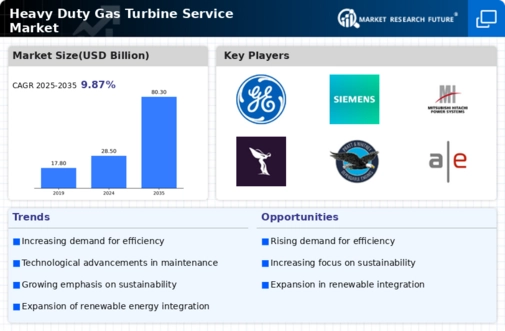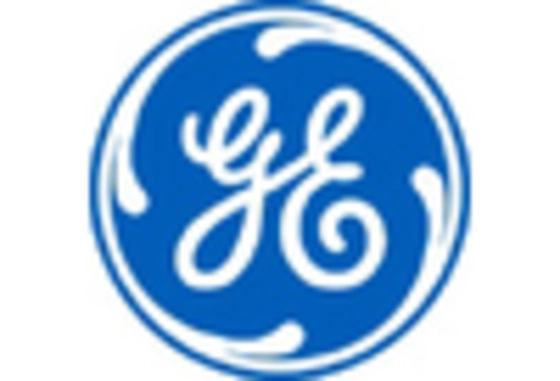The Heavy Duty Gas Turbine Service Market is characterized by a dynamic competitive landscape, driven by technological advancements, increasing energy demands, and a growing emphasis on sustainability. Major players such as General Electric (US), Siemens (DE), and Mitsubishi Power (JP) are at the forefront, each adopting distinct strategies to enhance their market positioning. General Electric (US) focuses on digital transformation and predictive maintenance solutions, aiming to optimize turbine performance and reduce downtime. Siemens (DE) emphasizes innovation in energy efficiency and sustainability, aligning its services with global decarbonization goals. Meanwhile, Mitsubishi Power (JP) is expanding its footprint in Asia and the Middle East, leveraging partnerships to enhance service delivery and operational efficiency. Collectively, these strategies contribute to a competitive environment that is increasingly centered on technological innovation and sustainability initiatives.
Key business tactics within the Heavy Duty Gas Turbine Service Market include localizing manufacturing and optimizing supply chains to enhance responsiveness to regional demands. The market structure appears moderately fragmented, with several key players exerting influence over their respective segments. This fragmentation allows for a diverse range of service offerings, yet the collective impact of major companies shapes competitive dynamics, fostering an environment where innovation and service quality are paramount.
In August 2025, General Electric (US) announced a strategic partnership with a leading renewable energy firm to integrate advanced analytics into its gas turbine services. This collaboration aims to enhance predictive maintenance capabilities, thereby improving operational efficiency and reducing costs for clients. The strategic importance of this partnership lies in its potential to position General Electric as a leader in the transition towards more sustainable energy solutions, aligning with global trends towards decarbonization.
In September 2025, Siemens (DE) unveiled a new service model that incorporates artificial intelligence to optimize gas turbine performance. This initiative is designed to provide real-time insights and predictive analytics, enabling clients to make informed decisions regarding maintenance and operational strategies. The introduction of AI into service offerings signifies Siemens' commitment to innovation and reflects a broader trend within the industry towards digitalization and enhanced operational efficiency.
In July 2025, Mitsubishi Power (JP) expanded its service capabilities in the Middle East by establishing a new service center in the UAE. This move is indicative of Mitsubishi's strategy to localize its services and enhance customer support in key growth markets. The establishment of this center not only strengthens Mitsubishi's operational presence but also underscores the importance of regional service capabilities in meeting the demands of a rapidly evolving energy landscape.
As of October 2025, current competitive trends in the Heavy Duty Gas Turbine Service Market are increasingly defined by digitalization, sustainability, and the integration of artificial intelligence. Strategic alliances are playing a crucial role in shaping the landscape, enabling companies to leverage complementary strengths and enhance service offerings. Looking ahead, competitive differentiation is likely to evolve from traditional price-based competition towards a focus on innovation, technological advancements, and supply chain reliability, as companies strive to meet the growing demands of a more sustainable energy future.

















Leave a Comment